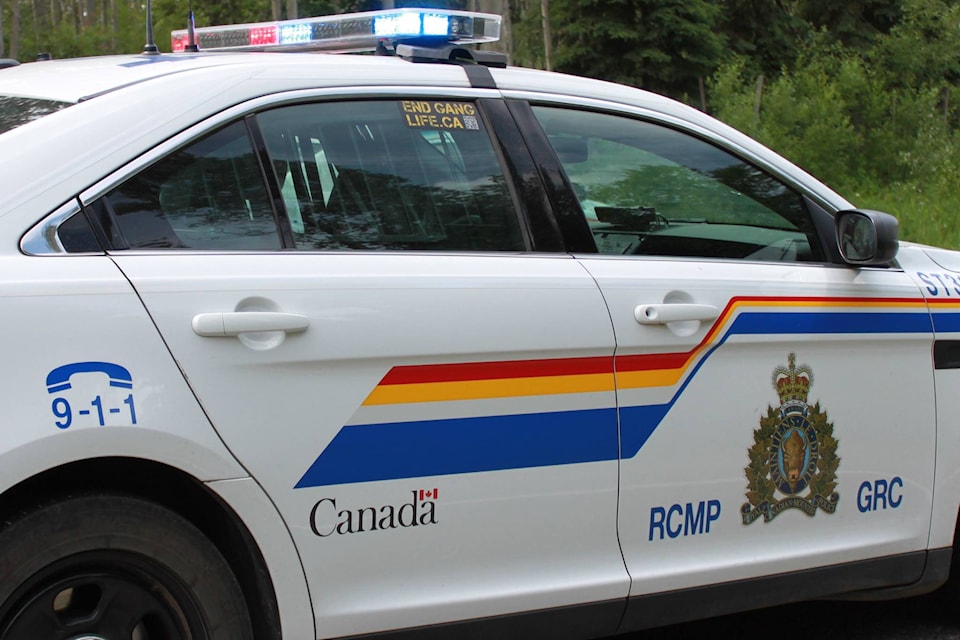Northern B.C. police saw a massive spike in the severity of calls for service last week compared to the same period last year.
Statistics provided by the Smithers RCMP detachment indicated North District (from 100 Mile House north) indicate domestic disturbance calls were up 82 per cent, general disturbance calls 83 per cent, calls about suicidal persons 75 per cent and mental health-related occurrences 350 per cent on an overall call volume that was down eight per cent.
Staff Sgt. Terry Gillespie, commander of the Smithers detachment, said he was reluctant to draw a direct line between the numbers and the COVID-19 pandemic because he didn’t have long-term data.
“To really make a conclusion to whether it’s COVID-related, I would actually need more stats,” he said.
That being said, he noted the spike is big enough and the geographic area large enough that a connection is probable.
“Right now it certainly seems like it is a trend that could likely be related, but I wouldn’t conclusively say it’s a scientific fact,” he said.
Carol Seychuk, executive director of the Northern Society for Domestic Peace said the important thing is for people to reach out for help if they are experiencing stressors.
“I really encourage families to reach out if they’re having a difficult time,” she said. “It’s understandable and if it’s getting some tools to cope with that and to be kind to one another… and if you have any concerns or you feel unsafe, reach out to the local crisis lines and shelters.”
Although Gillespie did not have numbers for Smithers specifically, he said he had reason to believe they were similar for Smithers.
“I spoke to the crime analyst, who said our trends are mirroring North District’s.”
The previous week also saw a decrease in call volume and increase in severity, although not nearly as dramatic.
READ MORE: Police see decrease in number, increase in severity of calls
Property crime was also up significantly in the North with a 58 per cent hike in break and enters to businesses and a 29 per cent increase in mischief under $5,000.
“I think certainly the criminal element takes advantage of any situation that they can and certainly having less people out and about and more businesses closed I think would lead likely to higher property crime,” Gillespie said.
Meanwhile, most municipal police services and RCMP detachments, including Smithers have closed their front counters to the public. This impacts certain services such as fingerprinting and criminal record checks.
They are also in the process of continuity planning in the event they start losing front line officers.
Gillespie said the RCMP uses a four tier priority system with violent crimes being priority one and minor incidents being priority four.
READ MORE: Celebrate Easter in a ‘safe way,’ Dr. Henry urges as B.C. records six new COVID-19 deaths
“Even if we lose 75 per cent of our front line or something like that, priority one and two should be unaffected, but the public may notice greater response time for priority three and four and perhaps even non-attendance at a priority four depending on how seriously we’re affected,” Gillespie said.
IN THE CITIES
By comparison, the big cities in the Lower Mainland and on Vancouver Island, are also seeing a spike in crime, but the trend is a little bit different.
Victoria has seen an overall increase in break and enters of 118 per cent since Jan. 1.
Bowen Osoko, a spokesperson for the Victoria Police department told The Interior News via email that 30 per cent of those were to undergrounds, construction sites, compounds, and outbuildings/sheds, but recently the trend has been toward business-related break ins.
“In the last week (March 19-26, 2020) there has been a notable increase in the number of Break and Enters to vacant businesses in the downtown,” he said. “We’ve responded early by having our patrol officers increase their proactive presence in both downtown Victoria and Esquimalt (we police two municipalities) as well as in core business areas.”
Vancouver businesses are also being hit hard.
“From March 1 to 15 (a two-week period), there were 86 commercial break-ins reported throughout the city,” Vancouver police said in a press release. “From March 16 to 24 (a one-week period), there were 81. The biggest increase has been reported in downtown Vancouver. From March 1 to 15, there were 20 commercial break and enters, but from March 16 to 24, there were 35.”
READ MORE: Kitimat LNG worker tests positive for COVID-19
Police chief Adam Palmer said they are implementing new measures to combat the spike.
“…it appears thieves are attempting to take advantage of commercial spaces that are closed due to social distancing measures,” he said. “We are targeting these offenders aggressively on several levels.
The VPD’s property crime detectives are currently running several investigative projects to target known offenders.”
They have also increased their visibility and presence near the hardest hit areas overnight by deploying more patrol officers and community safety personnel.
Neither Victoria nor Vancouver has reported significant increases in the kinds of calls North District RCMP are fielding in the domestic arena.
“We are not seeing those kinds of increases here,” Osoko said, noting from March 1 - 18 they had 16 domestic assaults this year versus 14 last year.
Nationally, the Canadian Anti-Fraud Centre has seen numerous COVID-19 related scams emerge. These include offers of air filters to protect against the virus; threats to disconnect power; fake lists of neighbourhood COVID cases; offers of medical products; and offers of tests.
editor@interior-news.com
Like us on Facebook and follow us on Twitter
